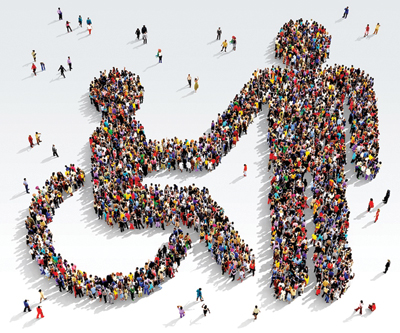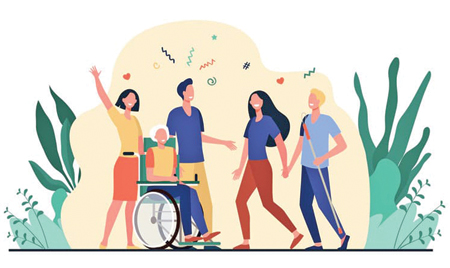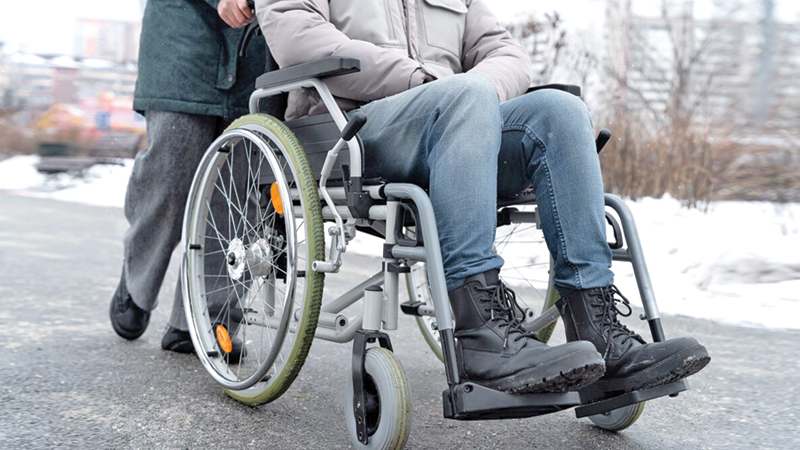 Humans depend heavily on the five main senses – vision, hearing, touch, taste and smell. Just imagine losing one or some of them and we cannot even imagine how we can live. But for more than a billion people the world over, living without some of these senses and some organs such as legs and arms that enable us to experience the world and live normally, is part of their existence. This takes away our ability to live normal lives – hence the term disability.
Humans depend heavily on the five main senses – vision, hearing, touch, taste and smell. Just imagine losing one or some of them and we cannot even imagine how we can live. But for more than a billion people the world over, living without some of these senses and some organs such as legs and arms that enable us to experience the world and live normally, is part of their existence. This takes away our ability to live normal lives – hence the term disability.
Disability is part of being human and is integral to the human experience. It results from the interaction between health conditions such as dementia, blindness, loss of limbs in accidents, spinal cord injury, and a range of environmental and personal factors. An estimated 1.3 billion people – or 16 percent of the global population – experience a significant disability today.
A diverse group
Apart from visible disabilities such as deafness and blindness, there are many hidden disabilities including mental disorders and Non-Communicable Diseases (NCDs). According to the World Health Organization (WHO), persons with disabilities are a diverse group, and factors such as sex, age, gender identity, sexual orientation, religion, race, ethnicity and their economic situation affect their experiences in life and their health needs. Persons with disabilities usually die earlier, have poorer health, and experience more limitations in everyday functions than others.
 But the world also recognises that those with disabilities may have certain talents that even able-bodied persons do not have. For example, a person with dementia may still be a good artist and a blind person could be an excellent musician. To recognise these unique abilities, most countries and organisations now call the disabled as “differently-abled” persons. This recognises the fact that they can contribute to society in so many other ways.
But the world also recognises that those with disabilities may have certain talents that even able-bodied persons do not have. For example, a person with dementia may still be a good artist and a blind person could be an excellent musician. To recognise these unique abilities, most countries and organisations now call the disabled as “differently-abled” persons. This recognises the fact that they can contribute to society in so many other ways.
December 3 (today) is the International Day of Persons with Disabilities (IDPD). Each year, IDPD focuses on a specific theme to address different aspects of disability rights and inclusion. The theme for 2023 is “United in action to rescue and achieve the Sustainable Development Goals (SDGs) for, with and by persons with disabilities.” Indeed, all countries must ensure that differently-abled persons are included in their SDG plans.
Thus on this Day, the WHO has called for action to achieve SDGs for, with, and by persons with disabilities.
Health inequities
The WHO calls the poorer health outcomes suffered by differently-abled persons as “health inequities” because they are sometimes avoidable and driven by unjust factors within and beyond the health sector. These factors include, for example, discrimination in our societies, inequitable policies, the determinants of health, lack of access or quality of care, and negative attitudes of health workers – to name a few. These health inequities are a stark reminder that persons with disabilities are too often left behind, and that achieving good health and well-being for all (SDG3) requires the meaningful participation and empowerment of persons with disabilities.
According to the United Nations and WHO, achieving SDGs for, with, and by persons with disabilities is now, more than ever, within our reach. In 2019, the UN Secretary-General António Guterres launched the Disability Inclusion Strategy (UNDIS) to bring disability inclusion in every work and core functions of the entire UN system.
The UNDIS has provided tools to initiate a bold systemic transformation, and is driving unprecedented progress for, with, and by persons with disabilities around the world. These achievements are remarkable demonstrations of the value of systemic planning for disability inclusion.
Two international frameworks
Countries have an obligation under international human rights law, and in some cases domestic laws, to address the health inequities faced by persons with disabilities. There are two important international frameworks which relate to health equity for persons with disabilities.
The Convention on the Rights of Persons with Disabilities requires countries to ensure that persons with disabilities have access to the same range, quality and standard of free or affordable health care as other ‘normal’ people.
The World Health Assembly (WHA) Resolution WHA 74.8 on the highest attainable standard of health for persons with disabilities calls for countries to ensure that persons with disabilities receive effective health services as part of Universal Health Coverage (UHC); equal protection during emergencies; and equal access to cross-sector public health interventions.
The UN notes that disability inclusion is critical to achieving the SDGs and global health priorities to achieve the goal of “Health for All”.
It is obvious that UHC will not be achieved if persons with disabilities do not receive quality health services on an equal basis with others. Investing in UHC for persons with disabilities benefits the whole society.
The WHO says that there could be almost a US$ 10 return for every US$ 1 spent on implementing disability inclusive prevention and care for NCDs.
Persons with disabilities must be considered when preventing and responding to health emergencies because they are more likely to be affected, both directly and indirectly. For example, during the Covid-19 pandemic, persons with disabilities living in institutions have been “cut off from the rest of society” with reports of residents being overmedicated, sedated, or locked up.
 In fact, the WHO Global report on health equity for persons with disabilities outlines 40 key actions for countries to take to strengthen their health systems and reduce health inequities for persons with disabilities. There are three main steps that all Governments and health sector partners can take. First, they must consider health equity for persons with disabilities in all health sector actions. Second, they can include persons with disabilities in decision-making processes. Third, they can monitor how persons with disabilities are being reached and benefitting from health sector actions.
In fact, the WHO Global report on health equity for persons with disabilities outlines 40 key actions for countries to take to strengthen their health systems and reduce health inequities for persons with disabilities. There are three main steps that all Governments and health sector partners can take. First, they must consider health equity for persons with disabilities in all health sector actions. Second, they can include persons with disabilities in decision-making processes. Third, they can monitor how persons with disabilities are being reached and benefitting from health sector actions.
More opportunities
It is also vital to include the differently-abled persons in national development. For example, a blind person can work as a telephone operator. The recent decision to grant driving licences to deaf persons in Sri Lanka is also a step in the right direction. There are many jobs that those without limbs can do. Sri Lankan authorities should undertake a proper survey on differently-abled persons.
The Census currently underway can identify such persons without spending additional funds on a separate survey. Then they can be directed to useful vocations after a training period. All Government and private sector organisations should include the differently-abled in their employment policies.
The future of ‘disability’
But disabilities could be a thing of the past in around 50 or 100 years, judging by the pace of current advances. Rudimentary artificial eyes are already available and they will only get better with the passage of time. Prosthetic limbs attached to the actual neurons are becoming available, as are artificial hearts. There will soon be exoskeletons that enable paralysed persons to walk properly. There is, however, a debate on the ethics of altering genes of unborn babies to prevent a disability, which is now within the realm of possibility.
It is also worth remembering that some, if not all, disabilities can be prevented through regular check-ups. Among them is blindness, perhaps the biggest disability of all – regular eye checks can help prevent diseases such as glaucoma and the removal of cataracts is a very simple surgical procedure. A healthy lifestyle can keep many NCDs in check.
****
Fact Sheet
* An estimated 1.3 billion people experience significant disability. This represents 16% of the world’s population, or 1 in 6 of us.
* Some persons with disabilities die up to 20 years earlier than those without disabilities.
* Persons with disabilities have twice the risk of developing conditions such as depression, asthma, diabetes, stroke, obesity or poor oral health.
* Persons with disabilities face many health inequities.
* Persons with disabilities find transport 15 times more difficult than for those without disabilities.
* Health inequities arise from unfair conditions faced by persons with disabilities, including stigma, discrimination, poverty, exclusion from education and employment, and barriers faced in the health system itself.









